Are you looking for a graphics card that can handle your gaming needs without breaking the bank or consuming too much power? If so, you’re in luck. There are plenty of low-power
GPUs on the market that can deliver a satisfying gaming experience at 1080p resolution. In this article, I’ll introduce you to five of the low-power 10 Best 75W GPU for gaming in 2024. These
GPUs are ideal for gamers who have a limited budget, a small form factor PC, or a low-wattage power supply. Let’s get started!
1. Intel Arc A380
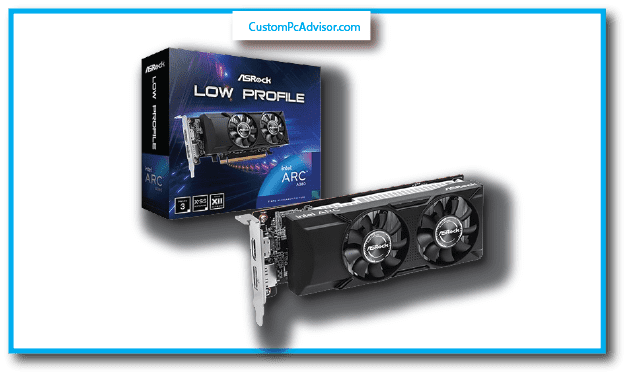
The Intel Arc A380 is one of the newest low-power GPUs on the market, and it’s also one of the most impressive. This GPU is based on Intel’s Xe HPG architecture, which is designed to
compete with NVIDIA and AMD in the gaming segment. The Arc A380 has 128 execution units, 8 GB of GDDR6 memory, and a 75W TDP. It can run most games at 1080p resolution
with high settings and achieve smooth frame rates. It also supports Intel’s Xe Super Sampling (XeSS) technology, which is similar to NVIDIA’s Deep Learning Super Sampling
(DLSS). XeSS uses AI to upscale lower-resolution images to higher-resolution ones, while preserving the image quality and improving the performance. With XeSS enabled, the Arc
A380 can even handle some games at 1440p or 4K resolution. The Arc A380 is a great choice for gamers who want a budget-friendly GPU that can punch above its weight.
2. NVIDIA GeForce GTX 1650

The NVIDIA GeForce GTX 1650 is not a new GPU, but it’s still a solid option for low-power gaming. This GPU is based on NVIDIA’s Turing architecture, which introduced features like
ray tracing and tensor cores. The GTX 1650 has 896 CUDA cores, 4 GB of GDDR5 memory, and a 75W TDP. It can run most games at 1080p resolution with medium to high settings
and maintain stable frame rates. It also has NVIDIA’s NVENC encoder, which is a dedicated hardware unit for video encoding. This feature is useful for gamers who want to stream or
record their gameplay without affecting the performance. The GTX 1650 is a reliable choice for gamers who want a proven GPU that can handle 1080p gaming with ease.
3. NVIDIA GeForce GTX 1050 Ti

The NVIDIA GeForce GTX 1050 Ti is another oldie but goodie in the low-power GPU space. This GPU is based on NVIDIA’s Pascal architecture, which was the predecessor of Turing.
The GTX 1050 Ti has 768 CUDA cores, 4 GB of GDDR5 memory, and a 75W TDP. It can run most games at 1080p resolution with low to medium settings and achieve playable frame
rates. It also supports NVIDIA’s Ansel technology, which is a tool for taking high-quality screenshots in games. You can adjust the camera angle, apply filters, and capture stunning
images with Ansel. The GTX 1050 Ti is a decent choice for gamers who want a budget-friendly GPU that can still perform well at 1080p.
4. AMD Radeon RX 6400
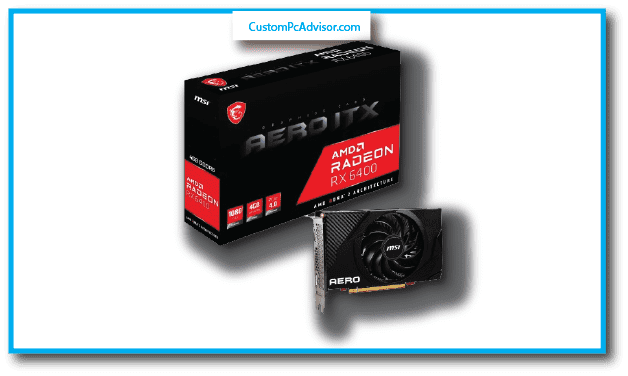
The AMD Radeon RX 6400 is a new entry-level GPU from AMD, and it’s aimed at gamers who play esports or less demanding games. This GPU is based on AMD’s RDNA 2
architecture, which powers the latest consoles and high-end GPUs. The RX 6400 has 1536 stream processors, 4 GB of GDDR6 memory, and a 75W TDP. It can run some games at
1080p resolution with high settings and deliver smooth frame rates, especially in esports titles like CS:GO, Valorant, or Fortnite. It also supports AMD’s FidelityFX Super Resolution
(FSR) technology, which is similar to NVIDIA’s DLSS. FSR uses a spatial upscaling technique to increase the resolution of lower-resolution images, while improving the performance
and image quality. With FSR enabled, the RX 6400 can even handle some games at 1440p resolution. The RX 6400 is a good choice for gamers who want a low-power GPU that can excel in specific scenarios.
5. NVIDIA GeForce RTX 3050 Low Power
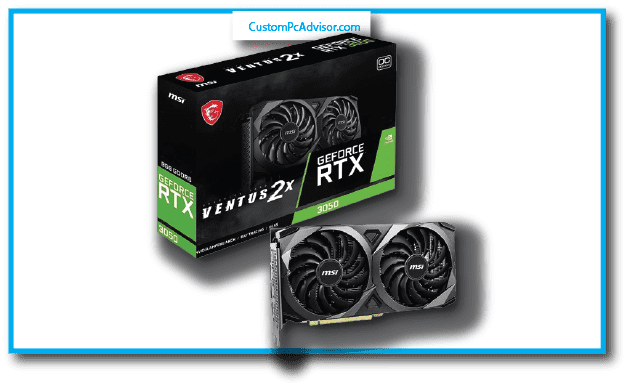
The NVIDIA GeForce RTX 3050 Low Power is a 75W variant of the RTX 3050, which is a mainstream GPU from NVIDIA. This GPU is based on NVIDIA’s Ampere architecture, which is
the successor of Turing. The RTX 3050 Low Power has 2048 CUDA cores, 4 GB of GDDR6 memory, and a 75W TDP. It can run most games at 1080p resolution with medium settings
and achieve decent frame rates. It also supports NVIDIA’s ray tracing and DLSS technologies, which are the main selling points of the Ampere GPUs. Ray tracing is a
technique that simulates realistic lighting and shadows in games, while DLSS is a technique that uses AI to upscale lower-resolution images to higher-resolution ones, while
boosting the performance and image quality. With ray tracing and DLSS enabled, the RTX 3050 Low Power can offer a more immersive and realistic gaming experience, albeit with
some limitations. The RTX 3050 Low Power is a nice choice for gamers who want a low-power GPU that can offer a taste of ray tracing technology.
6. Used RTX A2000
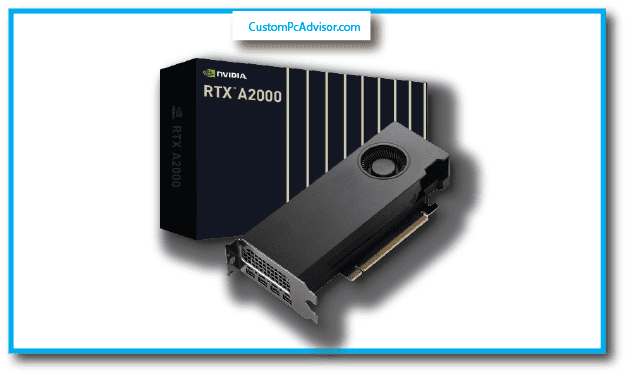
If you don’t mind buying a used GPU, you might want to consider the RTX A2000, which was originally designed for professional workloads like CAD, rendering, and video editing.
This GPU is based on NVIDIA’s Ampere architecture, which is the successor of Turing. The RTX A2000 has 3072 CUDA cores, 6 GB of GDDR6 memory, and a 70W TDP. It can run most
games at 1080p resolution with high settings and achieve smooth frame rates. It also supports NVIDIA’s ray tracing and DLSS technologies, which are the main selling points of
the Ampere GPUs. Ray tracing is a technique that simulates realistic lighting and shadows in games, while DLSS is a technique that uses AI to upscale lower-resolution images to
higher-resolution ones, while boosting the performance and image quality. With ray tracing and DLSS enabled, the RTX A2000 can offer a more immersive and realistic gaming
experience, comparable to the RTX 3050. The only downside of the RTX A2000 is that it uses mini-DisplayPort connectors, which might require adapters for some monitors. The
RTX A2000 is a great choice for gamers who want a high-performance GPU that can be found at a bargain price.
7. NVIDIA GeForce GTX 1630

The NVIDIA GeForce GTX 1630 is not officially released yet, but rumors suggest it could be a compelling option for budget builds. This GPU is expected to be based on NVIDIA’s Turing
architecture, which introduced features like ray tracing and tensor cores. The GTX 1630 is rumored to have 1024 CUDA cores, 4 GB of GDDR6 memory, and a 75W TDP. It is expected
to offer slightly better performance than the GTX 1650, while maintaining the same power consumption. It might also support NVIDIA’s NVENC encoder, which is a dedicated
hardware unit for video encoding. This feature is useful for gamers who want to stream or record their gameplay without affecting the performance. The GTX 1630 is a potential
choice for gamers who want a new GPU that can handle 1080p gaming with ease.
8. AMD Radeon RX 560
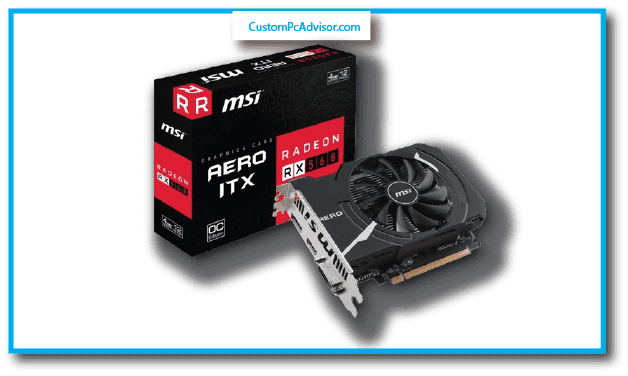
The AMD Radeon RX 560 is an older budget option that is still available and offers decent 1080p performance at lower settings. This GPU is based on AMD’s Polaris architecture,
which was the predecessor of RDNA. The RX 560 has 1024 stream processors, 4 GB of GDDR5 memory, and a 75W TDP. It can run some games at 1080p resolution with low to
medium settings and achieve playable frame rates. It also supports AMD’s FreeSync technology, which is a feature that synchronizes the refresh rate of the monitor and the
frame rate of the GPU, reducing screen tearing and stuttering. The RX 560 is a decent choice for gamers who want a cheap GPU that can still perform well at 1080p.
9. NVIDIA GeForce GT 1030
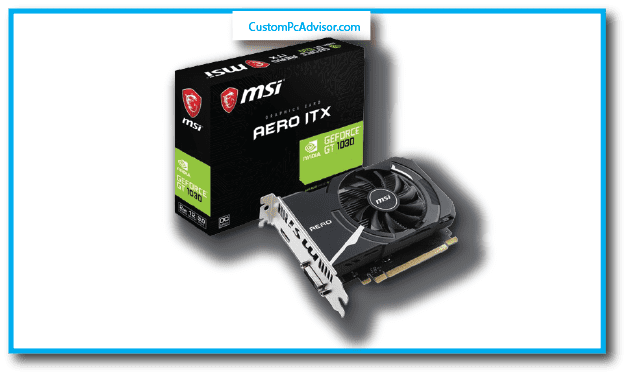
The NVIDIA GeForce GT 1030 is an entry-level offering that is targeted at non-gaming tasks like basic video editing and browsing. This GPU is based on NVIDIA’s Pascal architecture,
which was the predecessor of Turing. The GT 1030 has 384 CUDA cores, 2 GB of GDDR5 memory, and a 30W TDP. It can technically handle some older games at very low settings,
but it’s not recommended for serious gaming due to its limited capabilities. It also supports NVIDIA’s Ansel technology, which is a tool for taking high-quality screenshots in games.
You can adjust the camera angle, apply filters, and capture stunning images with Ansel. The GT 1030 is a suitable choice for users who want a basic GPU that can handle non-gaming tasks.
10. Integrated Graphics
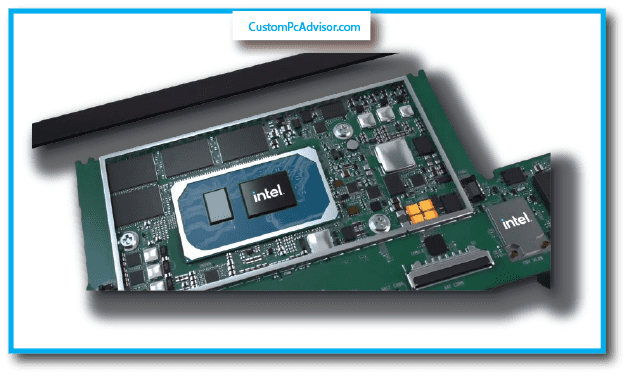
While not technically a separate GPU, it’s worth mentioning that modern integrated
graphics solutions, like those found in AMD Ryzen and Intel Core processors, have improved significantly in recent years. They can handle basic gaming and everyday tasks,
making them a viable option for users on a tight budget or with limited space for a dedicated GPU. For example, the AMD Ryzen 5 5600G has an integrated Vega 7 GPU,
which has 448 stream processors and a 65W TDP. It can run some games at 1080p resolution with low settings and achieve decent frame rates. Similarly, the Intel Core i5-
11400 has an integrated UHD 730 GPU, which has 24 execution units and a 65W TDP. It can run some games at 720p resolution with low settings and achieve playable frame rates.
Integrated graphics are a good choice for users who want a simple and cost-effective solution for basic gaming.
How to Choose a 75W GPU for Gaming and work
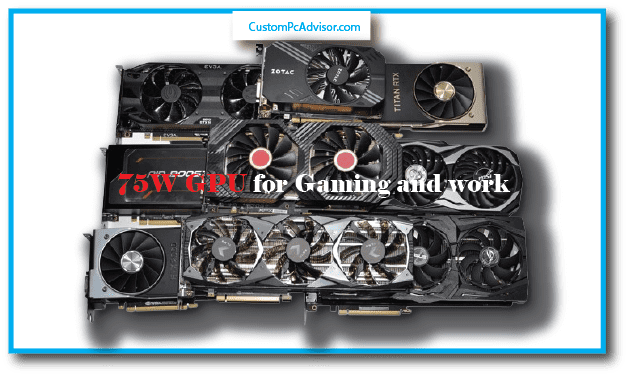
A 75W GPU is a graphics card that consumes only 75 watts of power, which is much lower than the typical 150W or 200W GPUs. A 75W GPU has several advantages, such as:
- It generates less heat, which means less noise and better cooling.
- It requires a less powerful power supply, which means lower electricity bills and less risk of power issues.
- It fits in smaller PC cases, which means more portability and flexibility.
However, a 75W GPU also has some drawbacks, such as:
- It offers lower performance than higher-powered GPUs, which means lower graphics quality and frame rates.
- It supports fewer features than higher-powered GPUs, which means less realism and immersion.
- It has less VRAM than higher-powered GPUs, which means less texture detail and resolution.
So, how do you choose a 75W GPU that suits your gaming needs? There are several factors to consider, such as:
Performance
The most important factor to consider is the performance of the GPU. How well can it run your favorite games at your desired resolution and frame rate? A 75W GPU is generally
targeted towards 1080p gaming at moderate to high settings, which means it can run most games at full HD resolution with decent graphics quality and smooth frame rates. However,
the performance will also depend on the game genre and the specific model of the GPU. For example:
Esports titles like CS:GO or League of Legends are less demanding and may run well on a lower-end 75W GPU, such as the NVIDIA GeForce GTX 1050 Ti or the AMD Radeon RX 560.
AAA titles like Cyberpunk 2077 or Red Dead Redemption 2 are more demanding and will require a more powerful 75W GPU, such as the Intel Arc A380 or the NVIDIA GeForce RTX 3050 Low Power.
To check the performance of a 75W GPU, you can look at online benchmarks, which show how different GPUs perform in different games at different settings. You can also watch gameplay videos or read user reviews to get a better idea of the real-world performance.
Features
Another factor to consider is the features of the GPU. What kind of graphics enhancements and technologies does it support? A 75W GPU may have fewer features than a higher-powered GPU, but it may still offer some benefits, such as:
VRAM: VRAM is the memory that the GPU uses to store textures and other graphical data. More VRAM is generally better, especially for higher resolutions and higher quality textures.
4GB of VRAM is considered the minimum for modern gaming, with 6GB or 8GB being ideal for 1080p gaming at high settings. A 75W GPU may have 4GB, 6GB, or 8GB of VRAM,
depending on the model. For example, the Intel Arc A380 and the NVIDIA GeForce RTX 3050 Low Power have 8GB of VRAM, while the NVIDIA GeForce GTX 1650 and the AMD Radeon RX 6400 have 4GB of VRAM.
Features like ray tracing and DLSS: Ray tracing is a feature that simulates how light behaves in the real world, creating more realistic lighting effects, such as shadows,
reflections, and ambient occlusion. DLSS (Deep Learning Super Sampling) is a feature that uses artificial intelligence to upscale lower-resolution images to higher-resolution ones,
while improving the performance and image quality. However, these features are typically only found on higher-end GPUs and may not be available on all 75W models. For example,
the Intel Arc A380 and the NVIDIA GeForce RTX 3050 Low Power support ray tracing and DLSS, while the NVIDIA GeForce GTX 1650 and the AMD Radeon RX 6400 do not.
To check the features of a 75W GPU, you can look at the specifications, which show what kind of graphics enhancements and technologies the GPU supports.
You can also watch gameplay videos or read user reviews to see how the features affect the gaming experience.
Power consumption
Another factor to consider is the power consumption of the GPU. How much power does it use and how much heat does it generate? A 75W GPU has a lower power consumption than
a higher-powered GPU, which means it will generate less heat and require a less powerful power supply. This is ideal for compact builds or systems with limited power supplies.
However, the power consumption will also vary depending on the specific model of the GPU. For example:
TDP (Thermal Design Power): This is the maximum amount of power a GPU is designed to use. A lower TDP means the GPU will generate less heat and require a less powerful power
supply. 75W GPUs have a TDP of 75W or lower, depending on the model. For example, the NVIDIA GeForce GT 1030 has a TDP of 30W, while the Intel Arc A380 and the NVIDIA
GeForce RTX 3050 Low Power have a TDP of 75W.
Power connectors: These are the cables that connect the GPU to the power supply. Some 75W GPUs do not require any power connectors, as they can draw enough power from the
motherboard. This makes them easier to install and more compatible with different power supplies. However, some 75W GPUs may require one or more power connectors, as they
need more power than the motherboard can provide. This may limit your options and require a more powerful power supply. For example, the NVIDIA GeForce GTX 1650 and the
AMD Radeon RX 6400 do not require any power connectors, while the Intel Arc A380 and the NVIDIA GeForce RTX 3050 Low Power require one 6-pin power connector.
To check the power consumption of a 75W GPU, you can look at the specifications, which show the TDP and the power connectors of the GPU. You can also check the power supply
requirements, which show the minimum wattage and the number of power connectors needed for the GPU.
Form factor
Another factor to consider is the form factor of the GPU. How big is it and how much space does it take up in your PC case? A 75W GPU is often smaller than a higher-powered GPU,
making it a good choice for small form factor (SFF) PCs. However, the size will also depend on the specific model of the GPU. For example:
Size: 75W GPUs are often shorter and narrower than higher-powered GPUs, making them easier to fit in smaller PC cases. However, some 75W GPUs may still be longer or wider than
others, depending on the design and the cooling system. For example, the NVIDIA GeForce GTX 1050 Ti and the AMD Radeon RX 560 are about 5.7 inches long and 4.4 inches wide,
while the Intel Arc A380 and the NVIDIA GeForce RTX 3050 Low Power are about 9.5 inches long and 4.4 inches wide.
Low–profile option: Some 75W GPUs come in a low-profile form factor, which is necessary for cases with limited space. A low-profile GPU is shorter and thinner than a regular GPU,
making it compatible with slim PC cases. However, a low-profile GPU may also have lower performance or fewer features than a regular GPU, depending on the model. For example,
the NVIDIA GeForce GT 1030 and the NVIDIA GeForce GTX 1650 have low-profile options, while the Intel Arc A380 and the NVIDIA GeForce RTX 3050 Low Power do not.
To check the form factor of a 75W GPU, you can look at the dimensions, which show the length, width, and height of the GPU. You can also check the compatibility, which shows
the minimum space and clearance needed for the GPU in your PC case.
Price
Another factor to consider is the price of the GPU. How much does it cost and how does it compare to other options? A 75W GPU is generally more affordable than a higher-powered
GPU, which means it will save you money and fit your budget. However, the price will also vary depending on the specific model, features, and brand of the GPU. For example:
Price range: 75W GPUs can range from around $100 to $300, depending on the model, features, and brand. For example, the NVIDIA GeForce GT 1030 and the AMD Radeon RX
560 are around $100, while the Intel Arc A380 and the NVIDIA GeForce RTX 3050 Low Power are around $300.
Value for money: 75W GPUs can offer different value for money, depending on the performance, features, and power consumption. For example, the Intel Arc A380 and the
NVIDIA GeForce RTX 3050 Low Power may offer more value for money than the NVIDIA GeForce GTX 1050 Ti and the AMD Radeon RX 560, as they offer higher performance, more features, and similar power consumption.
To check the price of a 75W GPU, you can look at online retailers, which show the current and historical prices of different GPUs. You can also look at online reviews, which show the
performance, features, and power consumption of different GPUs and compare them to the price.
What are the top brands offering 75W GPUs for gaming and work?
The main companies making 75W GPUs are NVIDIA, AMD, and Intel. They make these GPUs for games and work like video editing and designing.
Can a 75W GPU handle modern gaming demands effectively?
Yes, a 75W GPU can play new games well if you adjust the settings. It’s good for many popular games at normal settings.
How does the power consumption of a 75W GPU compare to higher wattage options?
A 75W GPU uses less electricity than bigger GPUs. This is good for saving energy and keeping your computer cool.
Are there any specific requirements for a computer to use a 75W GPU?
Your computer needs the right slot (PCIe) and enough power for a 75W GPU. You also need the right drivers and a monitor that can connect to it.
Can a 75W GPU support dual-monitor setups for productivity tasks?
Yes, a 75W GPU can handle two monitors at once. This is helpful for doing many things at the same time or for jobs like video editing.
What kind of gaming performance can I expect from a 75W GPU?
A 75W GPU can play games pretty well. It can handle most new games at medium or high settings, depending on the GPU model and screen resolution.
Are there any recommended cooling solutions for 75W GPUs?
Even though 75W GPUs don’t get as hot as bigger ones, they still need good cooling. This can be done with good airflow in your case and maybe extra fans.
How does the price of a 75W GPU compare to higher wattage alternatives?
75W GPUs are usually cheaper than bigger ones. They’re a good mix of performance and price, which works for lots of people.
Can a 75W GPU be overclocked for better performance?
Some 75W GPUs can be overclocked a little, but it’s not as common or effective as with bigger GPUs. Overclocking can also make them use more power and get hotter.
Are there any compatibility issues with using a 75W GPU with certain CPUs or motherboards?
It’s rare to have problems, but you should check that your CPU and motherboard work with the 75W GPU you want. Look at compatibility lists and what the manufacturer says to avoid problems.
How does the size of a 75W GPU compare to higher wattage options?
75W GPUs are usually smaller than bigger ones. This is good for small computers or when you don’t have much space.
What types of connectors are needed to power a 75W GPU?
Most 75W GPUs get power through a PCIe connector. Some might need extra connectors like a 6-pin or 8-pin.
Are there any specific driver requirements for using a 75W GPU?
75W GPUs work with the normal drivers from the GPU maker. Keep your drivers up to date for the best performance and to work with new games and programs.
Can a 75W GPU handle professional workloads like video editing or 3D rendering?
Yes, a 75W GPU can do jobs like video editing and 3D rendering. It might not be as powerful as bigger GPUs, but it can still do the work.
How does the power efficiency of a 75W GPU compare to other wattage options?
A 75W GPU is more power-saving than bigger GPUs. It uses less electricity but still works well, which can save money and keep your computer cooler.
Can a 75W GPU support VR gaming experiences?
Some 75W GPUs can work with VR games, but they might not do well with the really tough VR games. You should check if the GPU can handle VR before you buy it.
What are the advantages of choosing a 75W GPU over higher wattage alternatives?
Choosing a 75W GPU means it uses less power, doesn’t get as hot, and usually costs less. It’s also good for small computers or when you can’t use a lot of power.
Are there any notable limitations or drawbacks to using a 75W GPU for gaming and work?
A 75W GPU is okay for gaming and work, but it might not be the best for the hardest games or big work tasks. Also, you can’t make it run faster (overclock) as much as you can with bigger GPUs.
How does the performance of a 75W GPU compare to integrated graphics solutions found in many CPUs?
A 75W GPU is usually better than the graphics that come built into CPUs. It can make games look better and help with work like video editing and designing.
Conclusion
Thanks for the insightful GPU guide! 75W GPUs are indeed a solid choice for those looking for cost-effectiveness and energy efficiency. It’s great to see options ranging
from budget-friendly picks to more powerful used market finds like the RTX A2000. And you’re absolutely right about considering integrated graphics for users with
more basic needs. Keeping things cool and efficient is key for a smooth gaming experience. Thanks for sharing this valuable information!
FAQs
Are 75W GPUs good for gaming?
75W GPUs can handle many games, but the experience depends on the specific game and your desired settings. They typically excel at 1080p gaming at medium to high settings,
especially for less demanding titles. For competitive esports or older games, they can even handle higher settings. However, they might struggle with newer AAA titles at max settings or require lower resolutions and settings for smooth performance.
Do I need a powerful power supply for a 75W GPU?
No, the beauty of 75W GPUs is their low power draw. They are designed to be powered solely by the PCI-e slot on your motherboard, which can provide up to 75W of power.
This eliminates the need for a separate power connector and saves you money on a high-wattage power supply.
Are 75W GPUs good for compact builds?
Absolutely! Their low power consumption translates to less heat generation, allowing for smaller and quieter coolers.
This makes them ideal for compact PC builds where space is limited and efficient cooling is crucial.
What are some disadvantages of 75W GPUs?
Compared to higher-powered GPUs, 75W options generally offer lower overall performance, especially in demanding tasks like running high-resolution games at max settings or video
editing. They might also have fewer features, like dedicated ray tracing cores.
Should I consider integrated graphics instead of a 75W GPU?
It depends on your needs. Integrated graphics have come a long way but still lack the raw power of dedicated GPUs. They are suitable for basic tasks like browsing, light video editing,
and casual gaming. However, for a smoother and more enjoyable experience with modern games, a dedicated 75W GPU is a better option.
